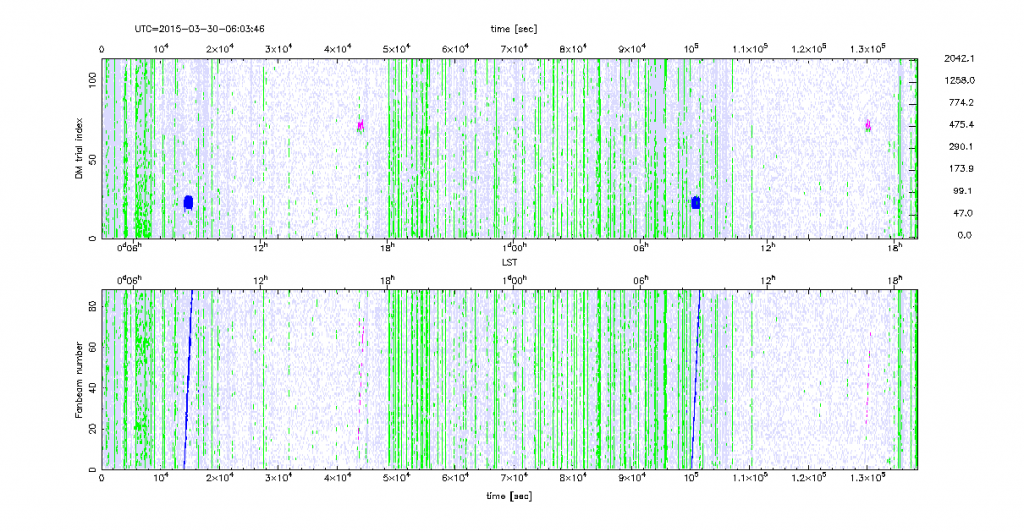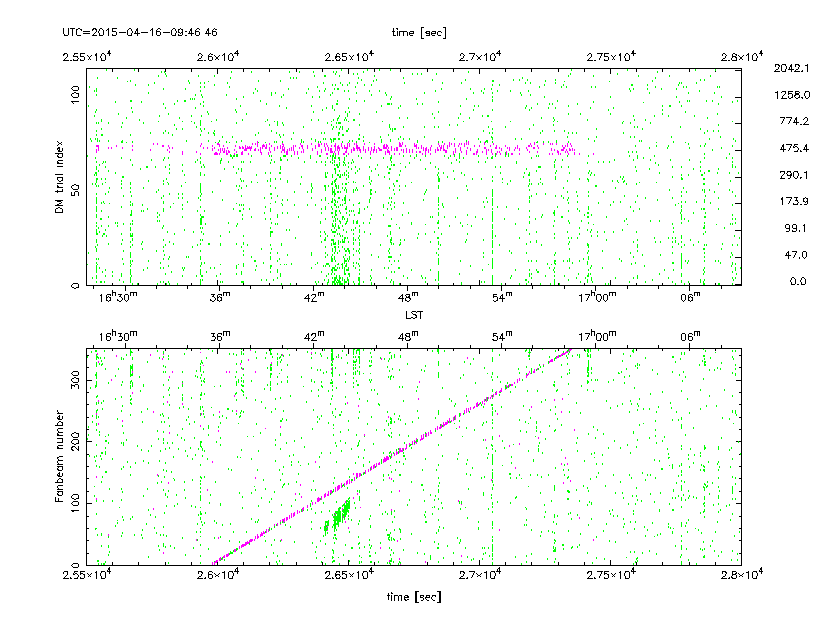23 April 2015 : The UTMOST FRB search program has now attained the full area of 8 square degrees of sky coverage – the complete field of view of the telescope. Until now, only a fraction of the telescope beam was being probed for FRBs. The 4×2 degree beam is being “tiled” with 352 thin “fanbeams” — each of which covers about 45 arcseconds East-West, and about 2 degrees North-South.
In one of our search modes, we point the telescope at the meridian at a declination which means the pulsars Vela and 1644-4559 to pass through the search area once every sidereal period. Individual pulses from these sources test our pipeline, as they are quite similar to what we expect to see with FRBs.
The plot shows a long FRB search — lasting almost 2 days — and shows Vela and 1644-4559 passing twice through the search area. Individual pulses from both pulsars show up clearly — Vela (blue) and 1644 (magenta) as they cross through from East to West). Narrow bursts of radio emission have been searched for in the data, and narrow ones (<32 ms) are marked. Grey shows events with low signal to noise SNR<10, while green shows SNR>10, and the SNR>10 pulsar pulses have been isolated out as known sources and marked in blue and magenta. Vertical green lines mark what is predominantly handset generated RFI near the site, and as they are seen spread through many/most of the fanbeams, we can mainly coincidence them out. The distinctively different dispersion measures (DM) of the two pulsars is seen in the upper panel. The pulse properties of these objects — period, width and DM, are all in excellent agreement with expectation, validating the pipeline.
A third pulsar, 1430-6623, has been rediscovered in our FRB search, from its individual pulses, seen in the plot above as a magenta sweep through the 352 fanbeams of the search area (lower panel) and at its distinctive DM of 480 DM units (upper panel). We serendipitously found the pulsar in our FRB search data, when the telescope was left at its declination due to mechanical work. 1430-6623 was originally discovered at Molonglo, and it is nice to validate our burst search procedures in this blind manner with it.
Data like this over a full 8 square degrees of sky has now been collected for most nights and weekends since Easter 2015, and is currently being analysed in the search for FRBs.

